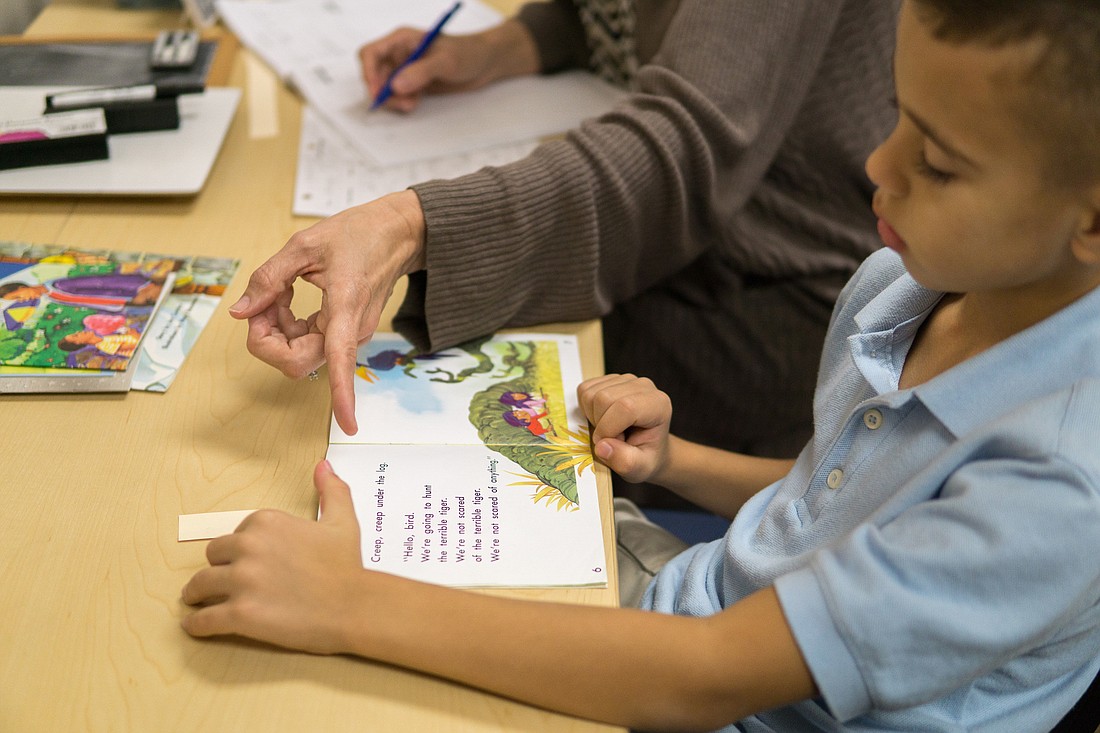- April 24, 2024
-
-
Loading

Loading

Something is different at Sarasota County’s elementary schools this year. All 23 of the schools now employ a new program to help younger students read better.
Lisa Fisher, a Reading Recovery Teacher Leader for Sarasota County Schools, said the program’s results can be wide-ranging. She described one student who was struggling in the first grade, reading at an early kindergarten level, but now is much further along.
“He could only write five words, his name being one,” Fisher said of a student enrolled last school year, when the program included 10 schools. “His self-esteem and his confidence had just tanked ... He didn’t smile, he was very quiet.”
Fisher said when the student started, he was reading at a Level 2. But at the end of 17 weeks, he tested at a Level 18 — close to two years of growth in a little more than four months.
“By the end of the program with me, he was reading to his little brother. He had really come out of his shell, was really able independently to show me what he can do,” she said.
Reading Recovery started in the 2015-2016 school year in Sarasota County. For 12-20 weeks, students receive 30-minute lessons focused on reading and comprehension. It gives intense, one-on-one tutoring to struggling first-graders, in an effort to reach them early and set them up for achievement as they continue through school
Typically, students who do not pass the Florida Standards Assessment in third grade are put into a Summer Reading Camp conducted by the district. If they do not pass an alternate exam at the end of that program, they are retained for the third grade.
For the 2017 Summer Reading Camp, 21% of the 172 students passed and were promoted to fourth grade, a district spokesman said.
“It would definitely be our expectation that as these first- graders continue to move up the grades, for those students to have the opportunity of having Reading Recovery and reach the average of their class, then yes — by the time they get to third grade, it would be our expectation that there would be a decrease in the number of children failing FSA,” Fisher said.
Part of what makes Reading Recovery so effective is that it’s a proactive program rather than reactive. Instead of offering remediation to students who already are behind, it offers help before they fail. And studies show that students who meet their class average with the program stay on level as they move forward.
“The more that children read and write, the better they get,” Fisher said. “But when they struggle, they avoid it. Because of the contingent teaching that we do with these children, we instill in them not only the ability, but the know-how, and the belief, that they can do this.”
Reading Recovery is a program that’s been around for decades. Locally, with $1.57 million from federal sources, the school district, the Gulf Coast Community Foundation and the Charles and Margery Baranick Foundation, students at all county elementary schools can benefit.
Thirty-four Reading Recovery teachers are now working in the district. Several team leaders, like Fisher, are trained through graduate-level coursework from Ohio State University, then return to train others in how to be Reading Recovery teachers.
In turn, part of each teacher’s role is to provide professional development to teachers and other staff members who don’t have Reading Recovery training, so they can still implement some practices in the classroom.
On average, a Reading Recovery teacher works with 40-45 students a year, Fisher said, meaning one teacher can have a big impact.
“It’s really a life-changing opportunity for every child,” Fisher said. “Our hope would be that we could provide it to every child that needs it. The more teachers that we have trained in order to provide this, the more children that we can reach.”